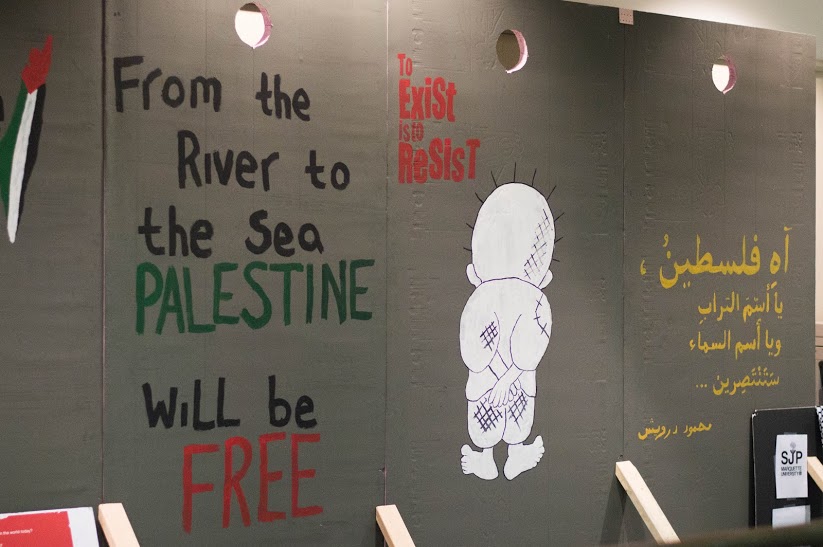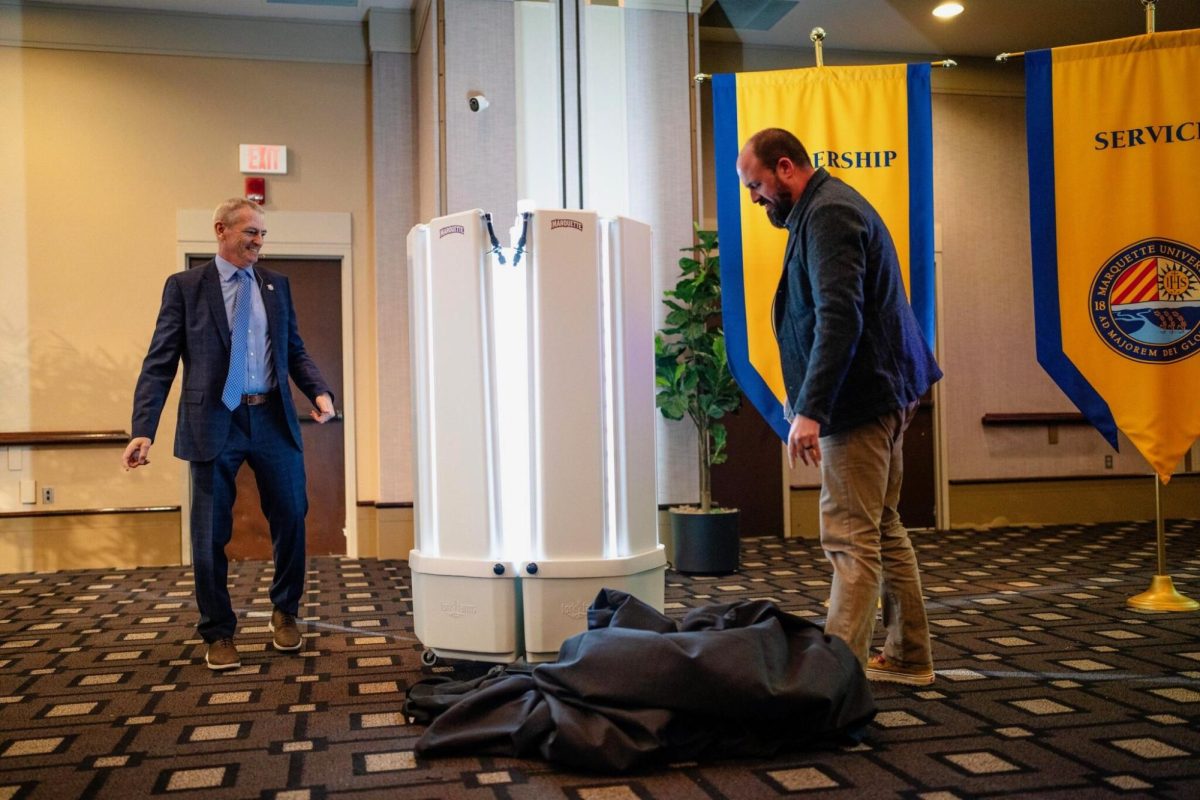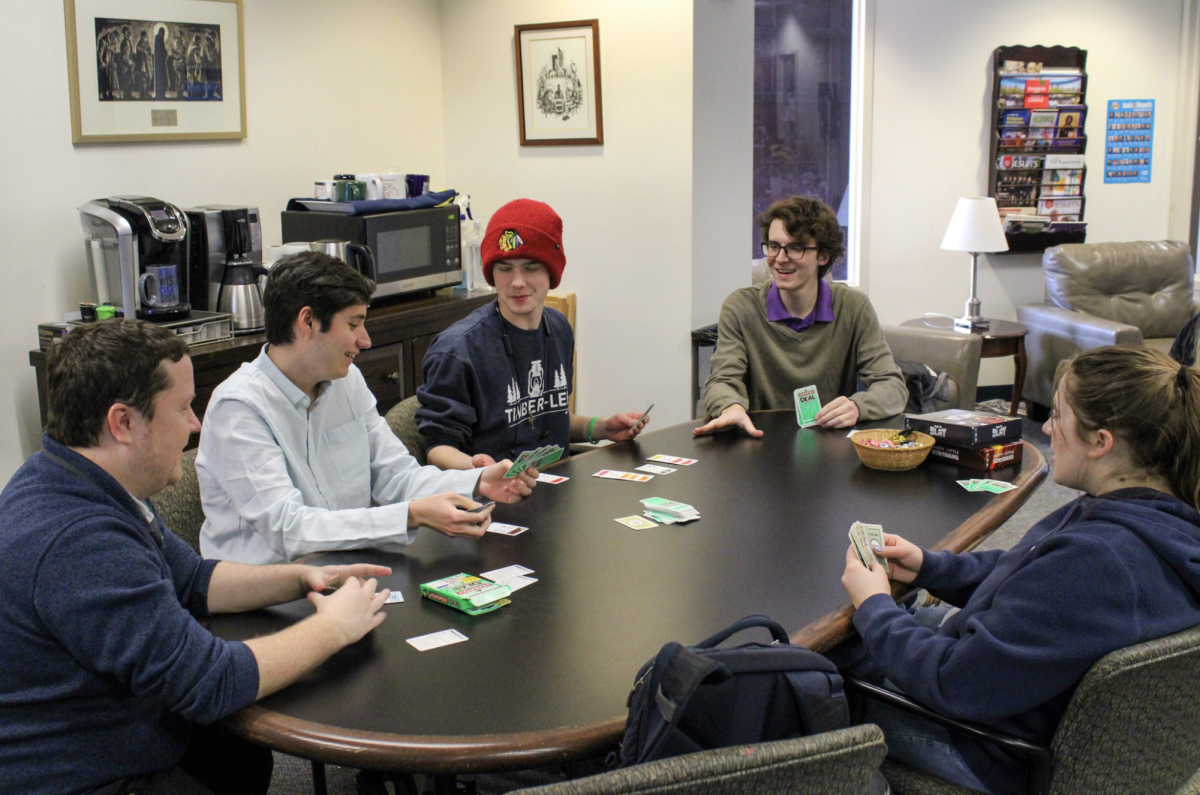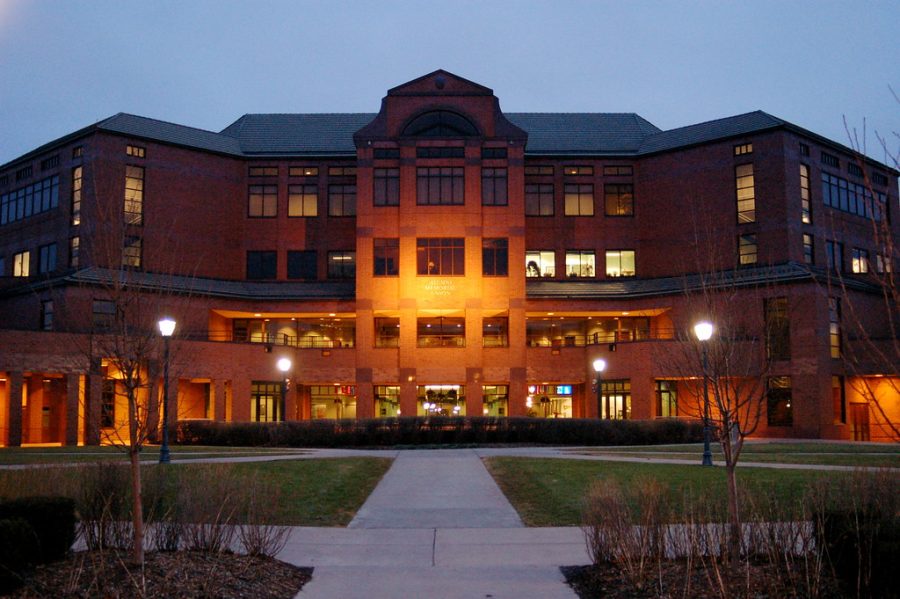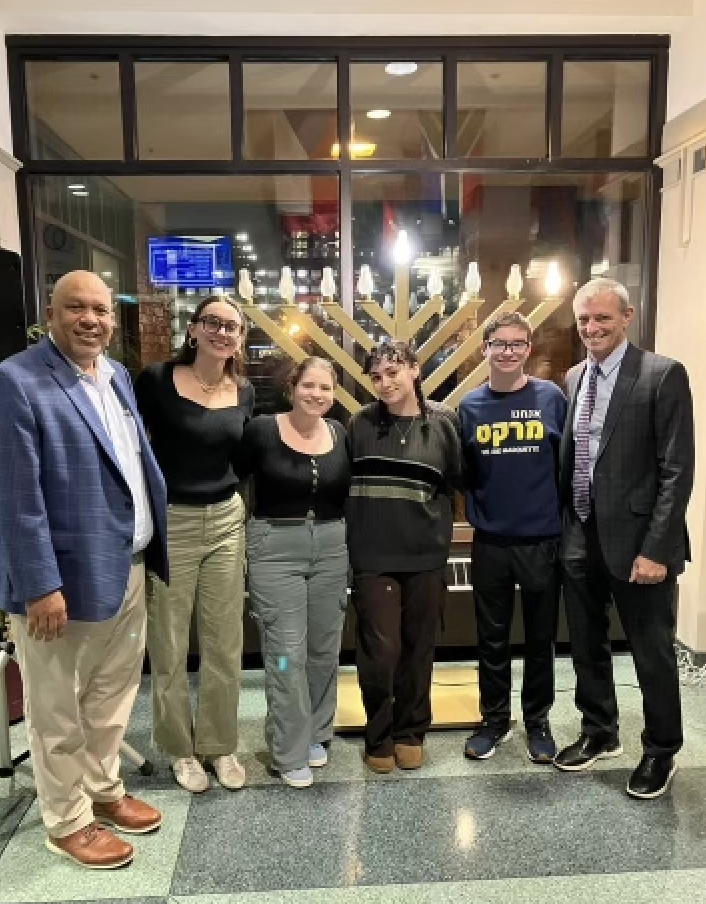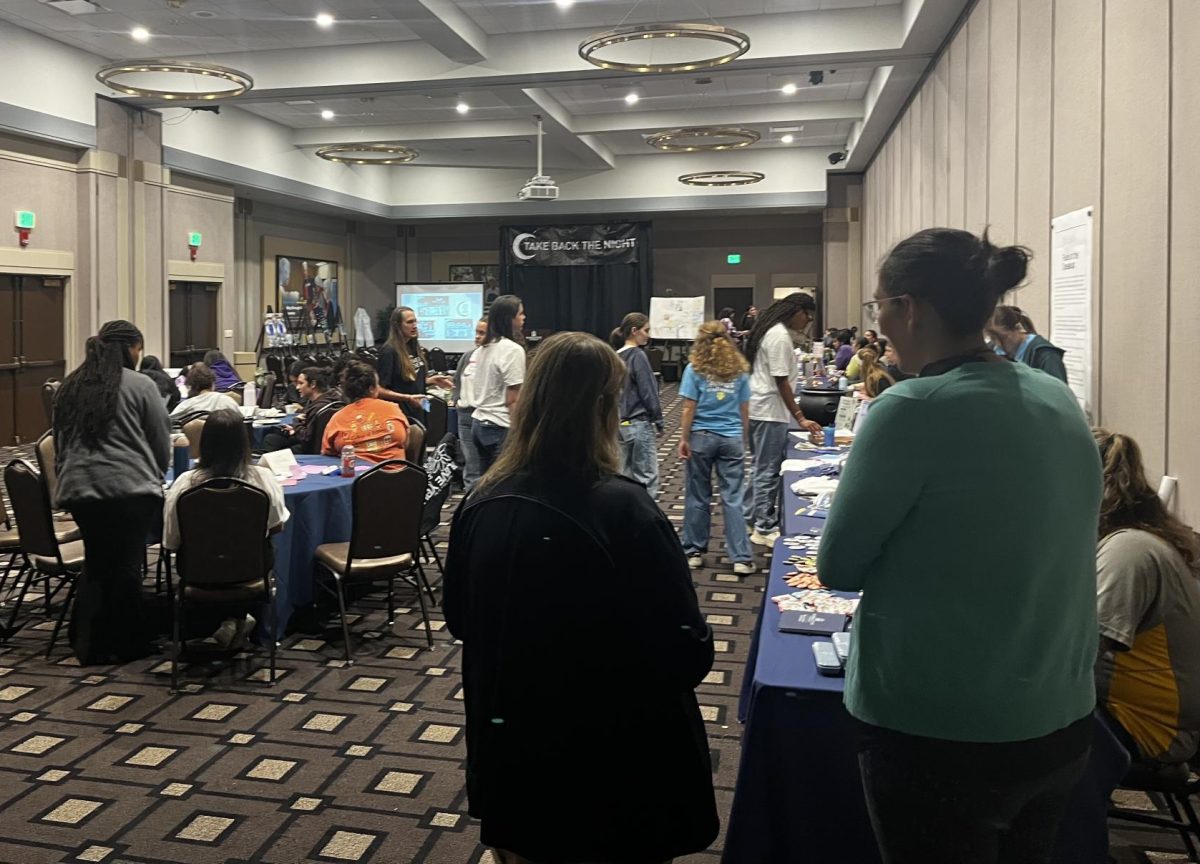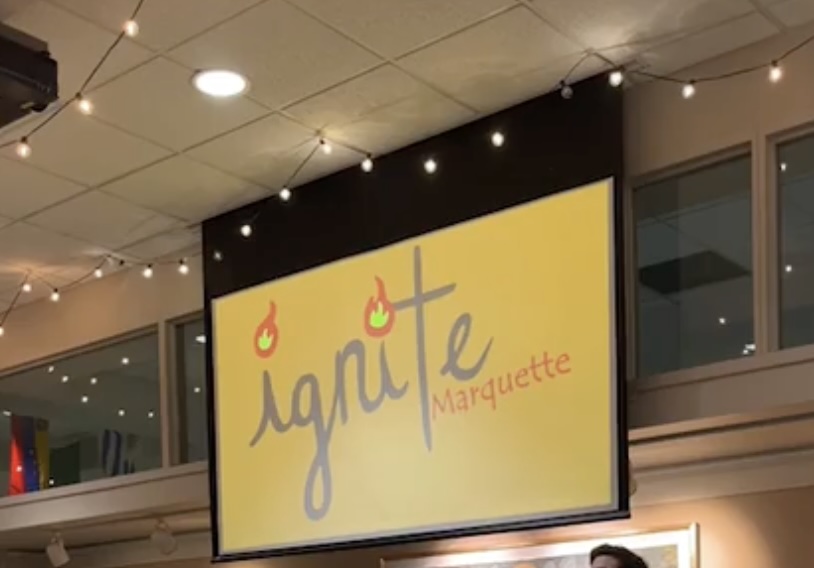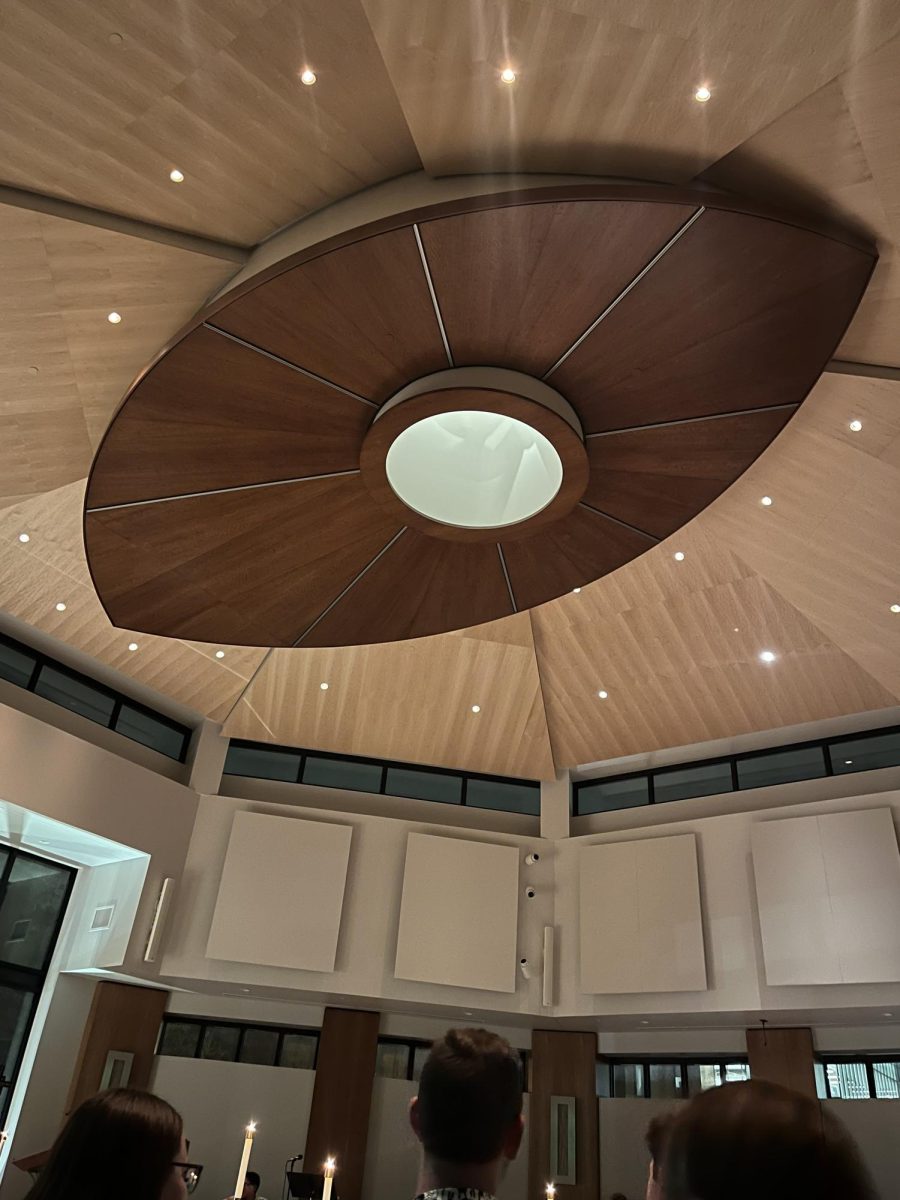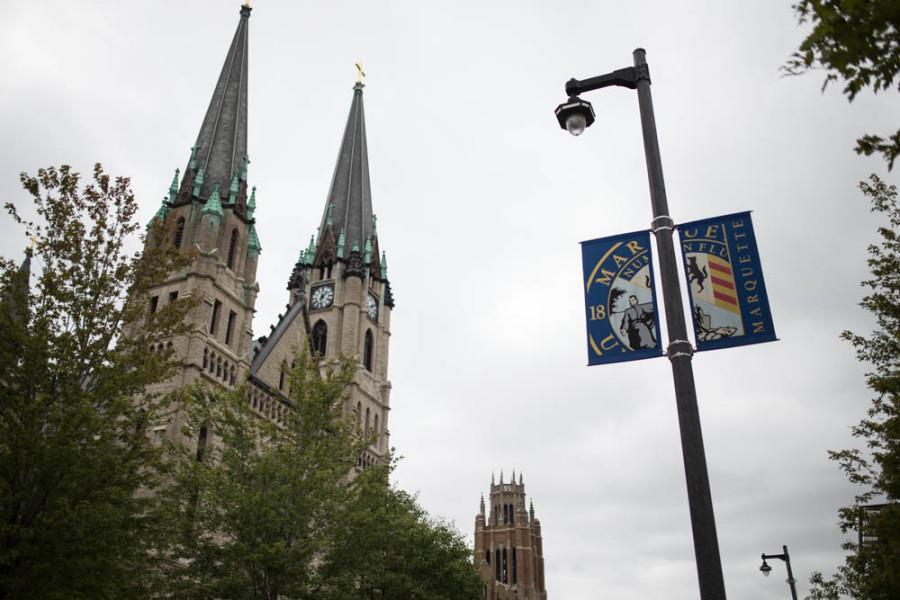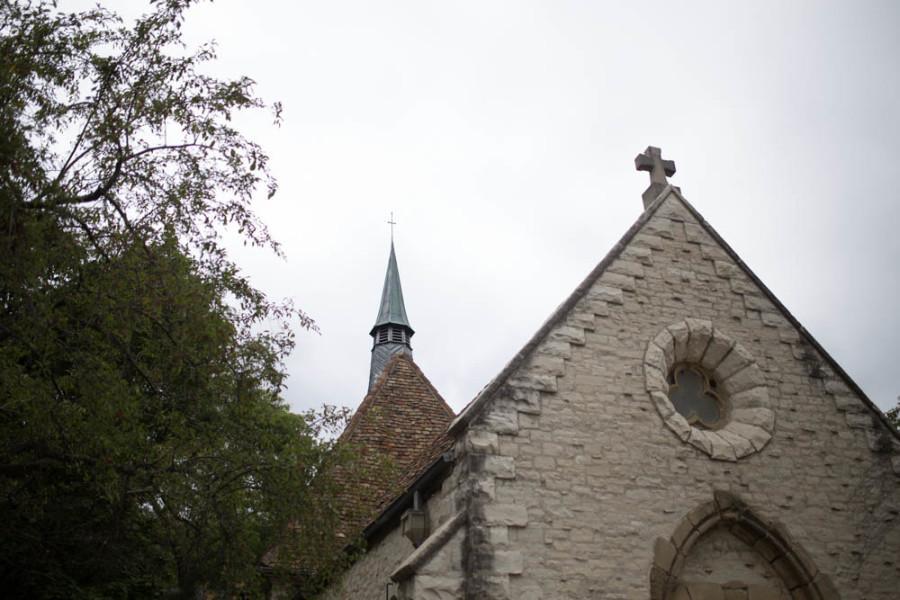After being taken down without warning, Students for Justice in Palestine re-displayed a newly designed mock apartheid wall this week after receiving Office of Student Development approval two weeks ago.
The wall was supposed to be re-displayed in Westowne Square outside the Alumni Memorial Union because the preferred AMU space was booked for the rest of the semester. When rain was forecasted for Wednesday, OSD told SJP to set it up in front of the Henke Lounge on the AMU’s second floor.
The wall displays symbolic images and statements about the Israeli-Palestine conflict, including “to exist is to resist.” It went up yesterday and remain there until 4 p.m. today. SJP placed posters near the wall to provide background information about the conflict.
The lightly trafficked location did not allow for many observers or those passing by. Two signs on the AMU’s second floor were set up to direct people to the display.
“I didn’t really think much about the wall when I saw it,” said Stephanie Jahr, a junior in the College of Arts & Sciences, who was typing on her computer while sitting near it. “It’s off to the side – if it were in the middle of the AMU, more people would notice it.”
OSD removed the wall during “Israeli Apartheid Week” in February, saying it violated submission policies that require student organizations to gain OSD’s advanced approval for events, publicity and displays.
However, Gadeer Ayesh, SJP president and senior in the College of Health Sciences, said OSD also told SJP that it could not display the wall due to an unnamed person’s conflicting views.
“Although I respect OSD and everything they do for this campus, their actions are highly inconsistent,” he said in an email. “Everything we attempt to do is looked at closely under a microscope”.
After the wall was removed, SJP consulted Palestine Legal, an organization working to protect free speech of Palestine freedom activist groups. Palestine Legal addressed the conflict in an email to Dean of Students Stephanie Quade, calling the university’s action a violation of SJP’s freedom of speech.
“The group recently submitted its display to our Student Affairs department, in accordance with our policies that cover all student groups, and was granted a space and timeframe for that display,” University Spokesman Brian Dorrington said in an email.
In addition, Ayesh said OSD would only approve the wall if SJP placed a sign near it to claim ownership of it.
Ayesh said SJP wants the display to show Marquette that it cares about the university and want to share its hardships.
“By not giving up and continuing to fight for the approval of this wall, we want to show everyone that we are here for good and we will not back down,” Ayesh said.
Palestine Legal’s electronic letter in March named both Campus Ministry and the Jewish Student Union as “hostile” groups that opposed SJP’s actions.
“In allocating this space, administrators communicated some concerns to the students about how other members of the Marquette community may interpret certain aspects of the group’s display,” Dorrington said about re-displaying the wall. “We understand that other students, specifically students in Marquette’s Jewish community, may share these concerns.”
Anna Goldstein, Jewish Student Union president and junior in the College of Arts & Sciences, declined to comment on the wall’s return to campus.

